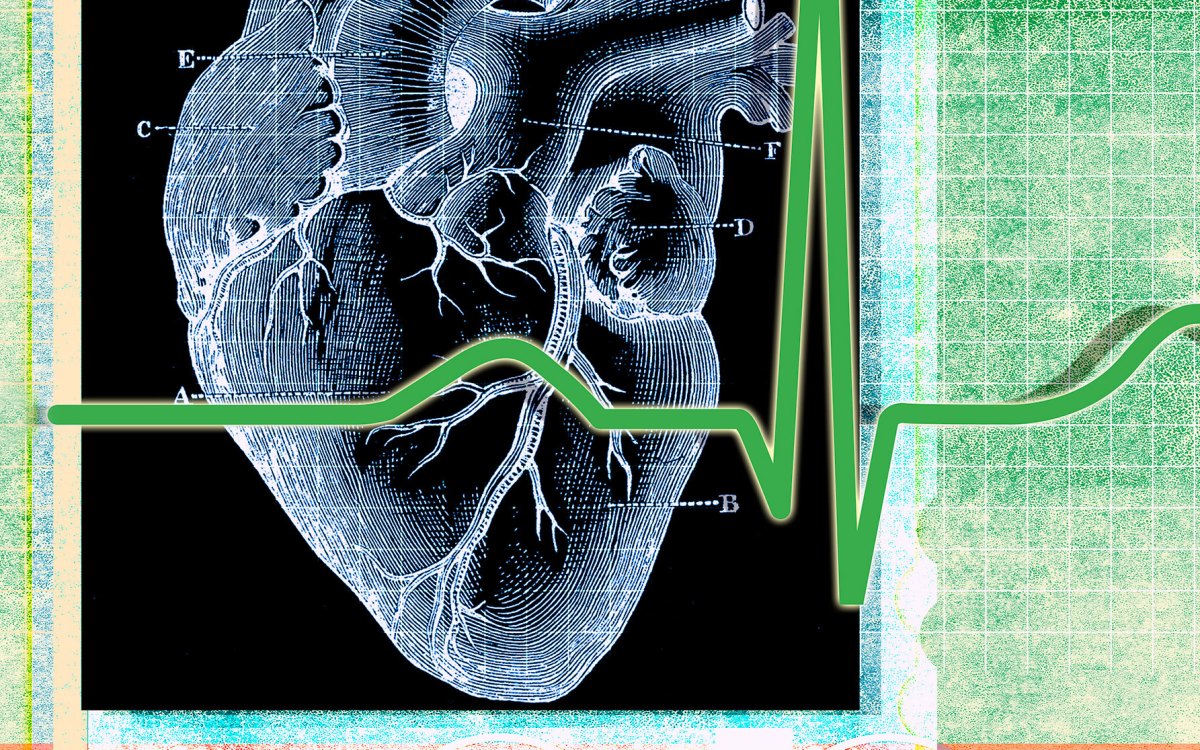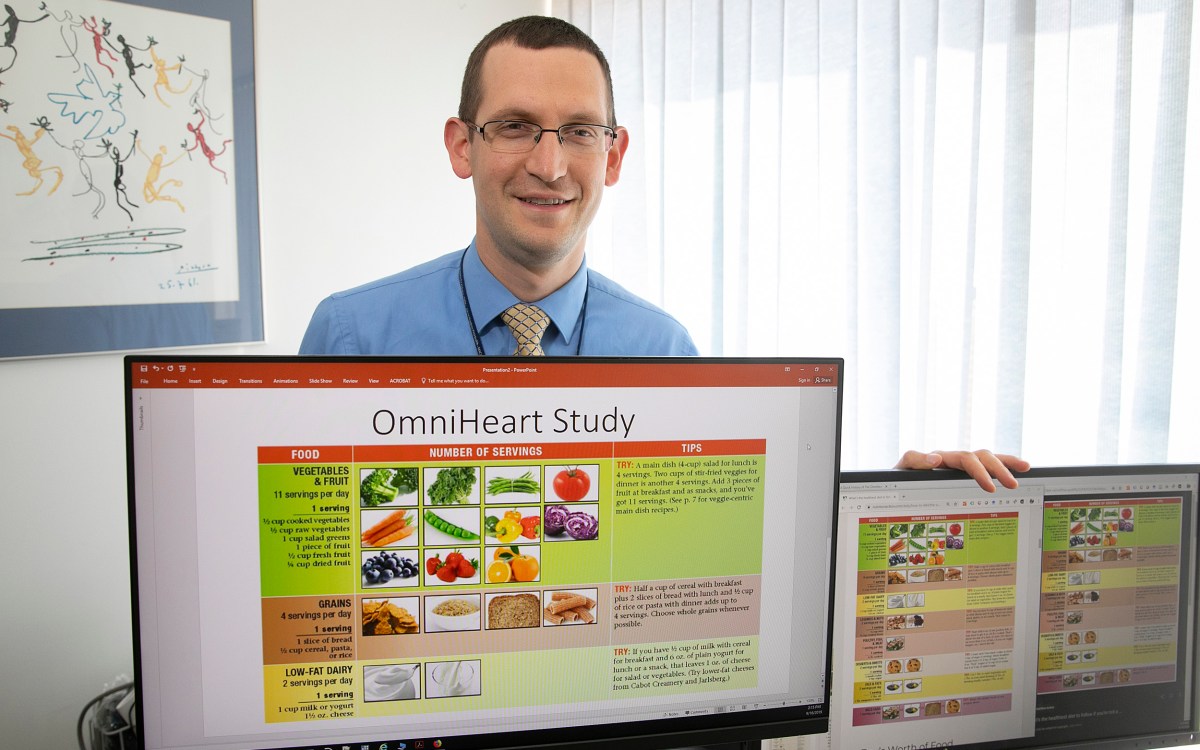Gorge today, sweat tomorrow? That’s not how it works.
Researcher outlines fresh data showing that you can’t outrun a bad diet

Illustration by Verónica Grech
Do you need a good diet if you log enough hours in the gym? How about the health-conscious couch potato — can he eat his way to optimal health? A study of more than 350,000 people in the United Kingdom says no, though I-Min Lee, a senior author of the research, plans to stick with the occasional sweet snack. In a conversation with the Gazette, Lee, a professor of medicine at Harvard Medical School and a professor of epidemiology at the Harvard T.H. Chan School of Public Health, discussed key findings in the study, which was published in the British Journal of Sports Medicine, and outlined her hopes for follow-up research. The interview has been edited for clarity and length.
Q&A
I-Min Lee
GAZETTE: The study addressed physical activity, diet, and then the two of them together?
LEE: Correct. We expected people who are more physically active to have lower rates of mortality during follow-up, lower rates of cardiovascular disease mortality, and less PDAR [physical activity, diet and adiposity-related] cancer mortality. This was borne out in our results, and the magnitude of risk-reduction was on the order of what we would expect, based on other studies using self-reported physical activity. We then examined the impact of diet, which was assessed in a bit more limited way. We looked at diet as diet quality, rather than a comprehensive measure of diet, simply because detailed diet data were not available at the time that physical activity was assessed. We categorized participants into poor, medium, and good diet based on fruit and vegetable intake, fish intake, and limited red meat and processed meat intake.
“You cannot outrun a bad diet, nor can you outeat an inactive lifestyle. We should strive to be counted as good in both habits.”
GAZETTE: What finding was most interesting to you?
LEE: Not unexpectedly, the people who were the best on both counts — the most active, the best diet quality — did the best. The people in the in-between groups had in-between outcomes. And the people who were inactive, with the worst diet, did the worst. What was notable was the observation that you couldn’t use one to counteract the other. In other words, inactivity or poor diet quality each was an independent risk factor: Having one rather than both put you in an in-between risk group. So, for people like me, I can’t use physical activity as an excuse for a horrible diet. Though I’m still not going to stay away from my occasional candy.
GAZETTE: Did you see a difference between vigorous physical activity and moderate physical activity?
LEE: Not really. We did analyses investigating both moderate and vigorous physical activity combined, as well as examining only vigorous physical activity. The results we saw were broadly similar.

GAZETTE: What kind of levels move the needle when we talk about diet? Do you have to be very strict?
LEE: The definitions we used in this study were not super strict. For diet quality, the cut point for a healthy amount of fruits and vegetables was 4½ servings a week or more. For fish, it was two servings a week or more. For meat consumption, it was twice a week or less for processed meat, and five times or less for red meat. That’s generally within guidelines for a healthy diet.
GAZETTE: How about with physical activity?
LEE: I’m going to provide a caveat here because the levels of physical activity in this study were assessed by self-report. They seemed to me to be on the high side. The median level in this population for walking and moderate-to-vigorous physical activity was more than 10 hours a week, which is more than what the U.S. population reports.
Based on many other studies of the amount of physical activity needed for health, we advise people to do 150 minutes a week, or 2½ hours, of moderate-intensity physical activity, 75 minutes a week of vigorous-intensity physical activity, or some combination of equivalent energy expenditure. Moderate intensity is an activity like brisk walking; vigorous intensity means running or jogging.
GAZETTE: And when we look at the two things together, do you see any interaction between the two?
LEE: There was basically no interaction, meaning that regardless of your diet quality, more activity gave you the same benefit. Also, regardless of your level of activity, better-quality diet was associated with the benefit. Stated a different way, a bad level of one habit was not offset by a good level in the other.
GAZETTE: What would you like to see happen next?
LEE: First, this reinforces the fact that healthy diet and physical activity are both important for your health. Ideally, one would achieve both. If you can be good only on one factor, that’s not bad, but both good habits are ideal. I would like to see a follow-up study with diet more comprehensively assessed. And physical activity also can be more comprehensively assessed, using devices to measure this more precisely, instead of self-reports. So, I would like to see a future study where we have both components measured more precisely and in more detail, because self-reports are just not that accurate.
GAZETTE: When we talk about public health messaging and how the media describes this study, is there an opportunity here to fine-tune what we tell people?
LEE: To the extent that some people believe — I’ll say this in quotation marks — “You can outrun a bad diet,” the present study refutes this notion. It would be best if one can be both active and consume a good diet. One good habit cannot compensate for the other bad habit. You cannot outrun a bad diet, nor can you outeat an inactive lifestyle. We should strive to be counted as good in both habits.








